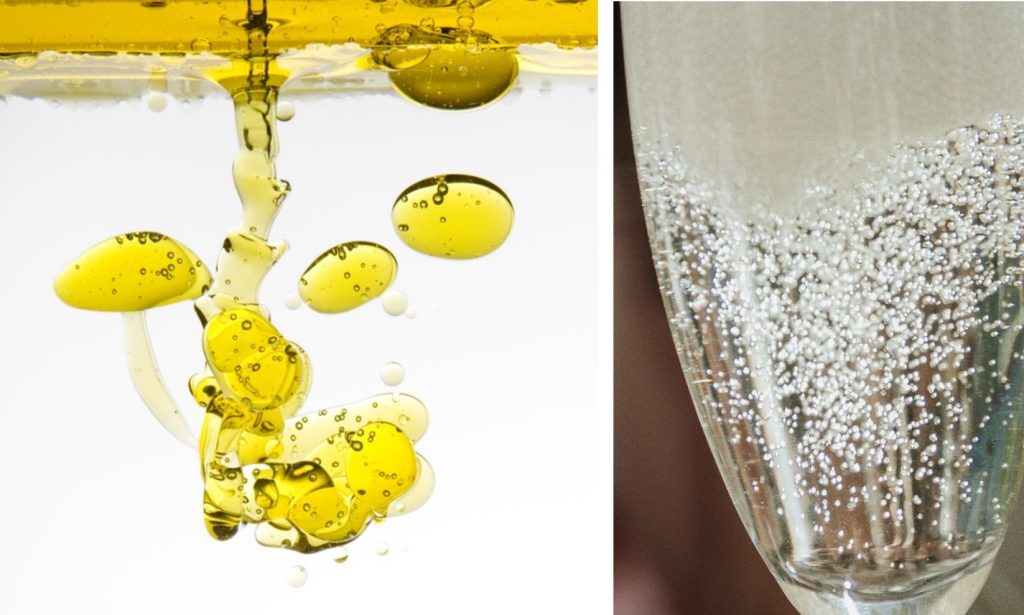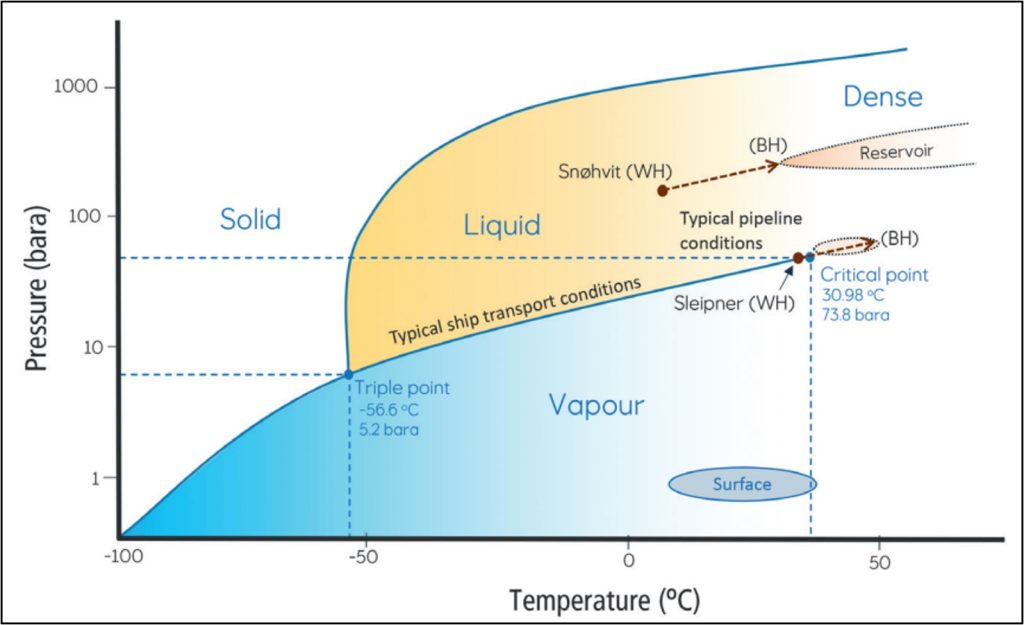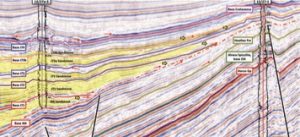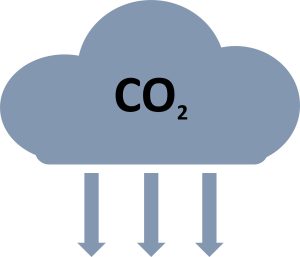Article 2: Deciphering the Supercritical State of CO2
One commonly misunderstood aspect of CO2 storage revolves around the behaviour of CO2 under subsurface conditions. Unlike our typical understanding of CO2 as a gas, at depths below ~800 meters and dependent on the pressure and temperature regime, CO2 exists as a liquid or a denser supercritical fluid. This phase is unfamiliar to many of us based on our experiences at the Earth’s surface. To put it simply, dense-phase CO2 exhibits a gas-like viscosity (around 0.06-0.07 centipoise) but has a fluid-like density (500-800 kg/m3). This unique substance behaves differently from methane in a gas reservoir, necessitating adjustments to traditional gas-reservoir engineering assumptions when analysing injection and storage processes. The interfacial tension between olive oil and water at surface conditions closely resembles that of CO2 and brine under subsurface conditions, making it an apt analogy for understanding dense-phase CO2, Figure 1.

The phase diagram of CO2, depicted in Figure 2, illustrates surface and subsurface conditions at CCS projects like Sleipner and Snøhvit, as well as typical conditions during CO2 transport to the wellhead. Both Sleipner and Snøhvit operate within the liquid to dense phase region, with Sleipner approaching two-phase conditions and the critical point in parts of the injection well.

A crucial aspect of CO2 storage projects is the significant temperature dependence of CO2 density, especially near the critical point. At Sleipner, where storage occurs within the 800-1000m deep Utsira sandstone, CO2 density varies from approximately 650 kg/m3 at the base to 350 kg/m3 at the top of the formation. In contrast, at the deeper Snøhvit project, where injection takes place at around 2.4 km depth, CO2 warms considerably once injected into the formation, with temperatures rising towards the formation temperature of around 95°C.
This thermal variation of CO2 affects the surrounding rock matrix, necessitating assessment of thermal-hydro-mechanical responses in the near-wellbore, reservoir interval, and caprock, and potential well integrity issues.
If we take a few steps back, how CO2 arrives at the injection site is also an important factor as it is the state in which the CO2 will be injected into the storage formation. During transport by ship, CO2 is typically maintained slightly above boiling point, whereas in pipelines it is in liquid phase to prevent two-phase flow and potential slugging. Managing CO2 phase transitions is crucial for CCS projects, especially considering the effects of minor components. For instance, adding 5% of CH4 in the CO2 stream shifts the critical point by about 3°C.
Understanding the phase behaviour of CO2, and the phase changes in different parts of the injection process, is paramount for successful CCS projects, and diverges significantly from gas field operations. This knowledge forms the foundation for managing operational risks and ensuring the efficacy of CO2 storage initiatives.
Look out for our next blog post where we discuss the fluid dynamics of CO2, which helps with modelling and prediction.
Benjamin Adillah, Senior Reservoir Engineer
References:
Ringrose, P. (2020). How to store CO2 underground: Insights from early-mover CCS Projects (SpringBriefs in Earth Sciences, Vol. 129. Cham, Switz: Springer.


